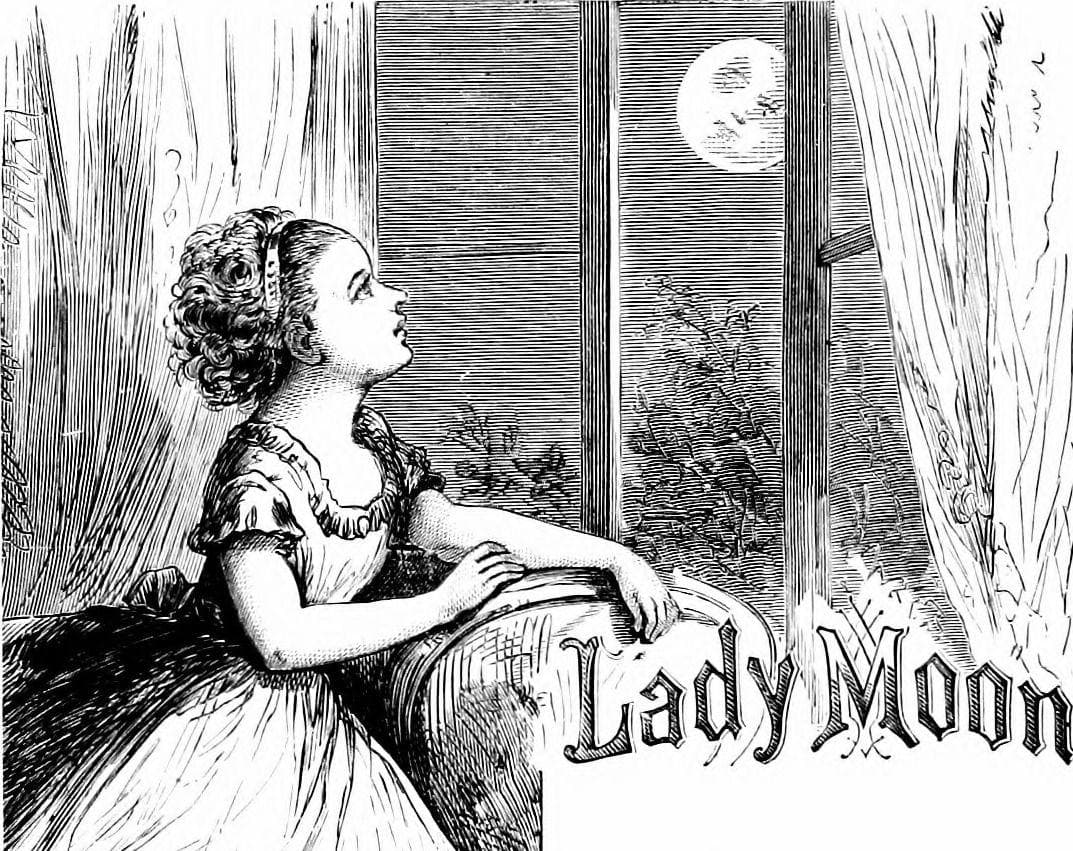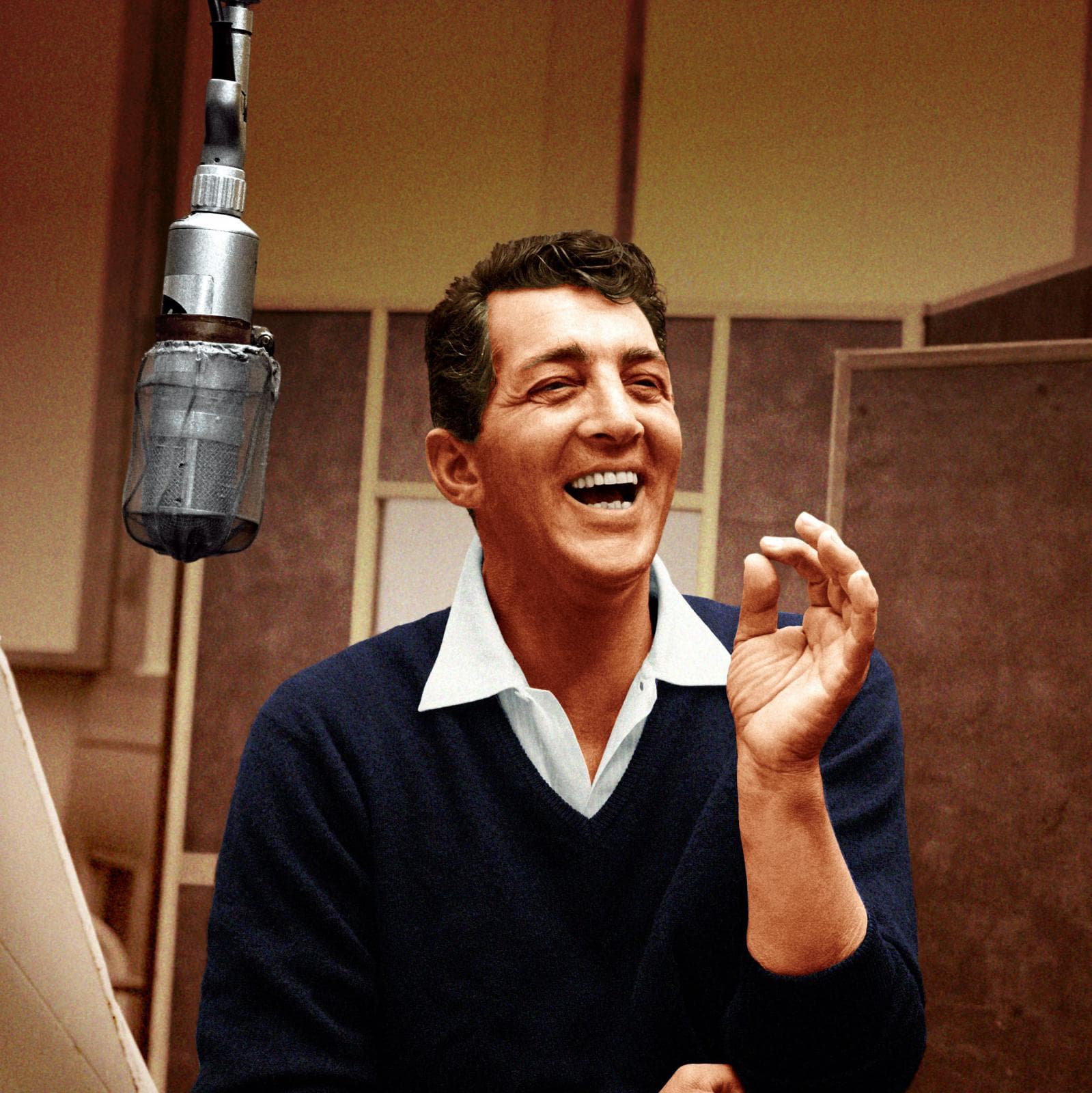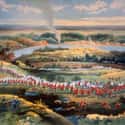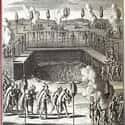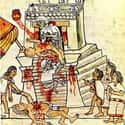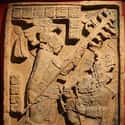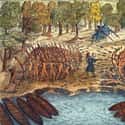-
(#6) Smoke and Flames: The Cree Raiding Parties
These are not the Kree from the Marvel Universe. They lived in the North and Western parts of what is now Canada. When the Hudson Bay Company started exploring the region, they set up several trading outposts. Even though the Europeans didn’t want to foster Native American warfare, they ended up supplying guns to the Cree in exchange for furs and other specialty items.
As a result, the Cree became more belligerent. They blamed their enemies for their natural and [perceived] supernatural misfortunes. With their new guns they pushed farther and farther northward and their warriors and war parties received more prestige. Warfare tapered off in the late 1700s as the Inuit also gained guns, but before that happened, the Cree would regularly send devastating raids that depopulated entire regions and left many women and children as slaves. This often led to a lifetime of suffering and misery, if they weren't killed right away.
-
(#4) Miami Sacred Bundles and War Dance
When a chief of the Miami tribe wanted to go to war, he would take a red wampum belt to the other war chiefs and invite them to a council. After explaining his plan and reasoning they would each discuss the prospects of war. If they agreed to launch a war party, each member of the war party brought their sacred war bundles to the meeting. The Shaman would put them into one bundle that he would carry as he led them in the march to the battle.
This was followed by a night-long war dance. One such dance was the Calumet dance. (Fun fact: the Calumet inspired the term peace pipe.) The warriors would take turns striking a post and then told of an act of past bravery. They would then smoke the Calumet and interweave their bodies with the rising smoke. In the morning they would put out the fire and embark on their journey.
-
(#3) Huron Feast of the Dead
The Hurons (they actually called themselves Wendat) would begin the Feast of the Dead by digging up their dead relatives and ancestors (some of the bodies were recently deceased and were seething with maggots). Then they would put them in beaver-skin clothes and clean and scrape the bones of those that had died. They re-wrapped them in the beaver skins, and the families of the dead held a feast.
After several days of feasts and at the command of the village leader, the family carried the body to a pre-dug hole. With loud chants and cries they placed the bones in a pit. With more chants and cries they threw in items such as clothing and food, as well. The preparation and elaborate rituals were designed to ensure the safe transit of the dead souls to the afterlife. After several days of this ceremony they would finally cover the pit and consider their relatives interred. At a famous feast of the dead in 1636, the bones from almost 700 people were thrown into the pit.
-
(#1) Aztec Heart Removal
Once the Aztecs captured enemy soldiers, they began the heart ceremony with at least four days of fasting. The captured soldiers were ritually cleansed and Aztec priests led their people in dances, songs, and rhythmic music as the captives were escorted to the top of the giant temples. The captive would either have their hearts removed on the altar of the great pyramid or fight to the death in mock combat. These terror-inducing ceremonies sustained the aura of leadership surrounding the emperor and his elite soldiers.
Conquistador Bernal Diaz wrote: "When Alvarado came to these villages he found that they had been deserted on that very day, and he saw in the cues (temples or pyramids) the bodies of men and boys who had been sacrificed, the walls and altars all splashed with blood, and the victims' hearts laid out before the idols. He also found the stones on which their breasts had been opened to tear out their hearts."
The skulls and other bones of the victims were piled in huge stacks that could sometimes number almost 100,000. Since these were prisoners of war this enhanced the power of the state and convinced the population of the Aztecs spiritual and martial supremacy.
-
(#2) Mayan Pre Battle Insults and Ritual Blood Letting
Much of Mayan battle practice is still shrouded in mystery. There are very few written accounts, and Mesoamerican scholars largely rely on very laconic glyphs on monuments that have only recently been deciphered.
These monuments record an honorable precedent where two opposing armies would stand apart on the battlefield. The leading warriors, decked out in their head gear, chest armor made of shells or bone, and obsidian weapons, would proclaim what house they come from, challenge the opponent to single combat, and then insult their martial prowess. This was done ostentatiously with great ritualistic flair.
The Bonampak murals also depicts ritual bloodletting. The blood of person represented life, and thus was a vital part of Mayan ceremonies. The king would slash himself in the tongue, ear, or foreskin with small obsidian blades or a stingray spine. Then the kind performed an ascension ritual that included bloodletting to appease the gods, while the priests performed human sacrifices for the same purpose. Another relief shows the king’s wife pushing a barbed rope through her tongue in order to see their ancestor emerge from the mouth of a giant vision serpent. At other times the blood fell on small strips of paper that were then burned by the priests. These ceremonies were very painful but designed to access supernatural power.
-
(#5) Iroquois Mourning War and Cannibalism
The Five Nations of the Iroquois spread through the Great Lakes region and dominated much of the Northeast. Upon the death of a family member they felt they needed a powerful ceremony to help overcome the sadness. They practiced in what was called “mourning wars." Their captives were either accepted into the tribe or tortured to death. If the latter, they first had their fingers cut off. Then they were forced to sing and dance upon a scaffold. The Iroquois burned the victim with a branding torch throughout the night. By the morning they finally ripped open the captive’s head and poured sand in it. Jesuit missionaries recorded what they saw, writing that the soldiers carved up and ate the body when their captive finally died.
New Random Displays Display All By Ranking
About This Tool
Native Americans wearing eagle feather crowns and ethnic costumes also add an ancient and mysterious atmosphere to this magical land. Human archaeologists have determined that Native Americans have many of the oldest peoples in the world. Arizona has the largest legal reserve of American Indian tribes in the United States, and 22 ancient Indian tribes still live here. Affected by modern society, the ancient Native American culture is constantly changing.
Although the rough primitive houses and solemn and mysterious festivals are still preserved, many violent and barbaric rituals and punishments have disappeared a long time ago. The random tool introduced 6 crazy punishments, rituals, and violent practices in Native American culture.
Our data comes from Ranker, If you want to participate in the ranking of items displayed on this page, please click here.

